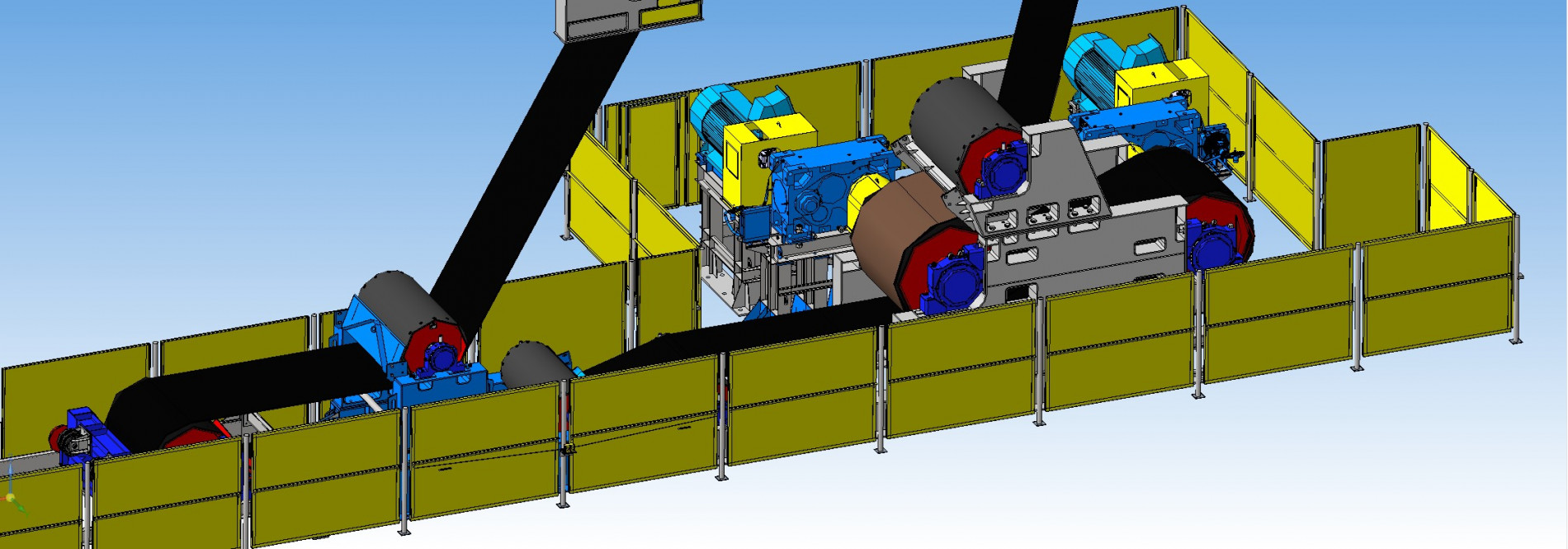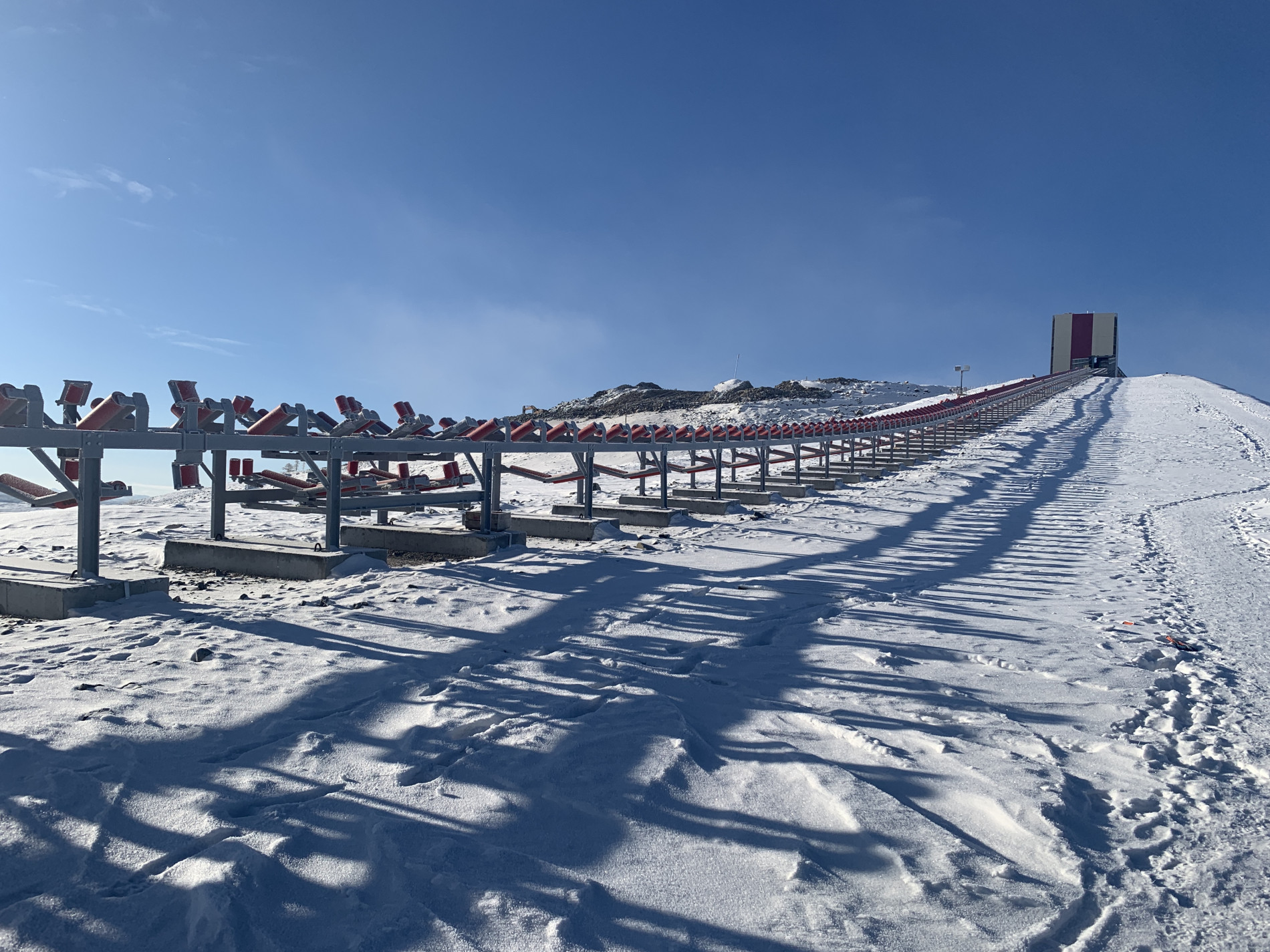Overland conveyors
Что такое магистральный конвейерный транспорт и что отличает его от обычных протяженных конвейеров?
Мы часто говорим и пишем про магистральные конвейеры. И тут задались вопросом– а что это такое? Что его отличает от обычных конвейеров? Что это за технологии, о которых так много говорят на рынке в последнее время?
Современные технологии дают четкое определение МКТ. Технические характеристики:
- Длина - свыше 1 км с шириной ленты 1200 мм и больше;
- Скорость ленты – 2,5 м/с и выше;
- Производительность - от 1500 т/ч и выше;
- Имеют сложную систему автоматики с выходом на верхний уровень управления;
- Предназначен для работы при низких температурах (до - 50°С).

Магистральные конвейеры могут служить альтернативой автотранспорту, применяемому в карьерах и на выработках. Они имеют пространственные изгибы по горизонтали и вертикали. Идут как правило в паре с дробилкой и могут транспортировать по холостой ветви отходы (пустую породу). Часто в технологической цепочке также используются отвалообразователи и реклаймеры.

Имеют высокий вес и ресурс комплектующих. Срок службы базовых элементов (барабаны) составляет 25 лет (при условии выполнения регулярного ТО). Ролики и роликоопоры должны иметь не более 1-1,5% выхода из строя в год от общего количества на конвейере, срок службы подшипниковых узлов – 50 тыс. моточасов. Приводная группа имеет срок службы 5 лет до капитального ремонта, 10 лет - весь срок службы.
Для всех комплектующих обязателен входной контроль металла и дефектоскопия ответственных сварных швов, а также тесты на ударную вязкость при низких температурах вне зависимости от информации из сертификатов поставщиков.
Именно этих критериев мы и будем придерживаться для описания технологий и понятий на нашем сайте.

Мы постоянно в поиске новых технологий и техник, которые могут улучшить нашу продукцию и по большому счету – двигать отрасль вперед. А сейчас наши специалисты совместно с учетными из университета Магдебурга (Германия) и МИСИС (Москва) заняты подготовкой фундаментального научного труда, посвященного поколениям конвейеров и в целом развитию конвейерного транспорта и магистральных конвейеров
Скоро мы начнем выкладывать части этого изыскания у нас на сайте - следите за обновлениями! Точно можем сказать – такого до нас не делал никто.
Магистральные ленточные конвейеры НПО «Аконит» — в «Стройке века»
«Стройка века» - это уникальный проект по строительству ГМК «Удокан», после полного запуска которого «Удоканская медь» войдет в ТОП-10 производителей меди в мире. Сейчас проект вышел на финишную прямую. Один из показателей этого — запуск «под нагрузкой» магистрального ленточного конвейера протяженностью 2,8 км. Эта конвейерная система с комплектующими была спроектирована специалистами НПО «Аконит» и изготовлена на собственных производственных площадках компании.
Технические характеристики магистрального ленточного конвейера:
- состоит из 2 конвейеров 1500 и 1300 м соответственно, способных надежно работать в сложных климатических условиях: среднегодовая температура -7,5 º,
- сейсмичность — до 9 баллов,
- влажность воздуха — до 70%.
- Дополнительные требования к ленточным конвейерам — бесперебойность работы при условии прохождения по сложному рельефу и «гуляющей» почве.
Испытания «под нагрузкой» конвейерное оборудование НПО «Аконит» прошло успешно. Заказчик отметил исполнение специфичных требований к оборудованию и качество конвейерных систем. Один из показателей доверия компании к отечественному производителю — участие НПО «Аконит» в дальнейшей реализации проекта. «Участие в подобном проекте — это возможность показать уровень компетенции и огромный опыт. Мы доказали, что российские производители ленточных конвейеров способны обеспечить достойный, конкурентный уровень качества оборудования и услуг», - отметили в НПО «Аконит.